2015 Lincoln Navigator: Car Seat Check

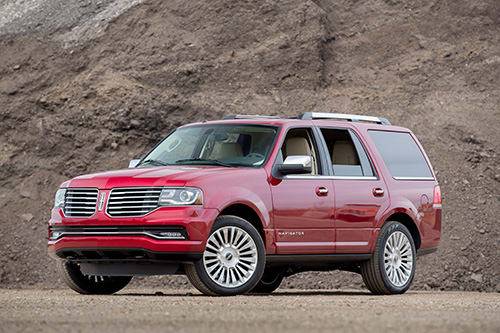
Lincoln’s largest SUV got refreshed for 2015, but the Navigator’s passenger and cargo volume are unchanged this year. Seating for eight is standard again, but our test model’s optional second-row captain’s chairs reduced capacity to seven. Accessible Latch anchors make the second row car-seat friendly, but the third row’s tether anchor position and lack of room complicated installation of our booster and forward-facing convertible.
How many car seats fit in the second row? Two
How many car seats fit in the third row? Two
What We Like
- The captain’s chairs’ Latch anchors sit just inside the seat bight, where the back and bottom cushions meet, and are easy to access with the infant seat’s hooklike connectors, but the stiff leather seat cushions complicate access when using the convertible seat’s rigid Latch connectors. A little more muscle is required to connect with those connectors.
- After pushing through the stiff leather seat cushions to connect to the Latch anchors, our convertible installed easily in both forward- and rear-facing modes. The captain’s chairs have fixed head restraints, but they didn’t interfere with the angle of our convertible in the forward position. Also, the chairs recline but do not slide, but our convertible still had plenty of room in rear-facing mode. We did not have to move the front passenger seat forward to accommodate it.
- The captain’s chair cushions are flat, which helped situate our booster, and the buckles are on stable bases so kids should be able to grasp them easily.
- Access to the third row is good through the passageway between the captain’s chairs, and step- in is manageable thanks to the power running boards. My 4-year-old was able to climb into the second row unassisted.
What We Don’t
- We had to move the front passenger seat forward to accommodate the rear-facing infant seat, which was surprising and disappointing for an SUV this large. Taller front passengers will need more knee room to be comfortable.
- The third row only has one top tether anchor; it’s a strap located under a cargo area’s floor panel. Parents may have trouble finding it. Also, the anchor strap is located in the middle seating position, which is where we installed the forward-facing convertible. Putting a booster or small passenger on either side of the middle position would be tough because there’s not a comfortable amount of room next to the car seat.
- We installed the booster in the third row in an outboard position, and the space was tight with the forward-facing convertible in the middle position; it was tough to squeeze our hand between the two car seats to locate the buckle. The buckles are on stable bases, but they swivel down into the cushion, which could make it difficult for kids to use them. The third row’s head restraints are also fixed and caused the booster to sit at an angle.
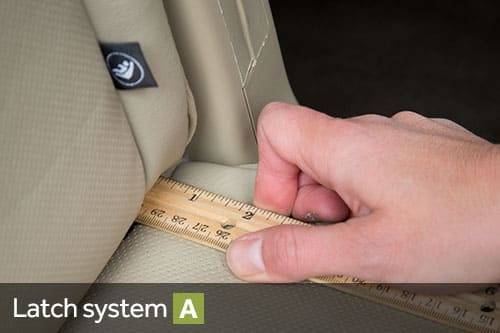
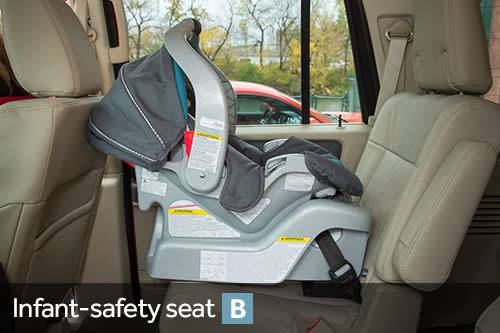


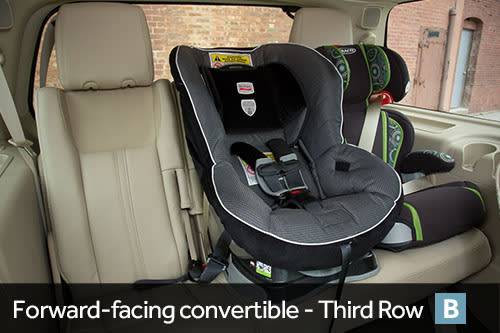
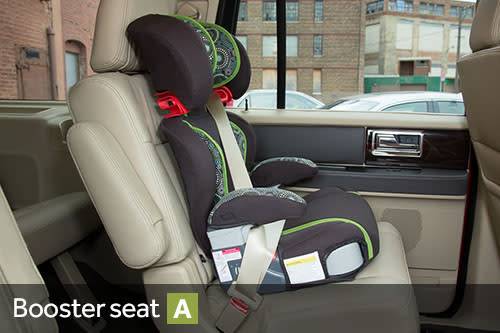
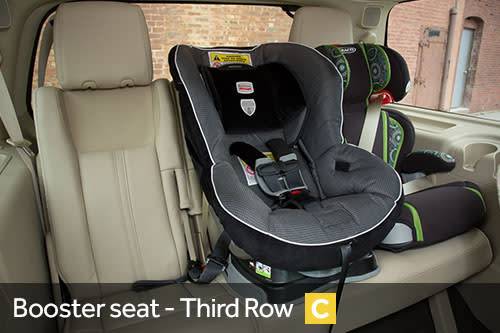
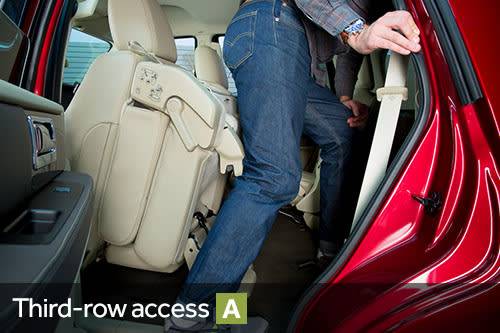
Grading Scale
A: Plenty of room for the car seat and the child; doesn’t impact driver or front-passenger legroom. Easy to find and connect to Latch and tether anchors. No fit issues involving head restraint or seat contouring. Easy access to the third row.
B: Plenty of room. One fit or connection issue. Some problems accessing third row when available.
C: Marginal room. Two fit or connection issues. Difficult to access third row when available.
D: Insufficient room. Two or more fit or connection issues.
F: Does not fit or is unsafe.
About Cars.com’s Car Seat Checks
Editor Jennifer Newman is a certified child safety seat installation technician. Editor Jennifer Geiger is working on renewing her certification.
For the Car Seat Check, we use a Graco SnugRide Classic Connect 30 infant-safety seat, a Britax Marathon convertible seat and Graco TurboBooster seat. The front seats are adjusted for a 6-foot driver and a 5-foot-8 passenger. The three child seats are installed in the second row. The booster seat sits behind the driver’s seat, and the infant and convertible seats are installed behind the front passenger seat.
We also install the forward-facing convertible in the second row’s middle seat with the booster and infant seat in the outboard seats to see if three car seats will fit; a child sitting in the booster seat must be able to reach the seat belt buckle. If there’s a third row, we install the booster seat and a forward-facing convertible. To learn more about how we conduct our Car Seat Checks, go here.
Parents should also remember that they can use the Latch system or a seat belt to install a car seat, and that Latch anchors have a weight limit of 65 pounds, including the weight of the child and the weight of the seat itself.
Cars.com photos by Evan Sears

News Editor Jennifer Geiger joined the automotive industry in 2003, much to the delight of her Corvette-obsessed dad. Jennifer is an expert reviewer, certified car-seat technician and mom of three. She wears a lot of hats — many of them while driving a minivan.
Featured stories




